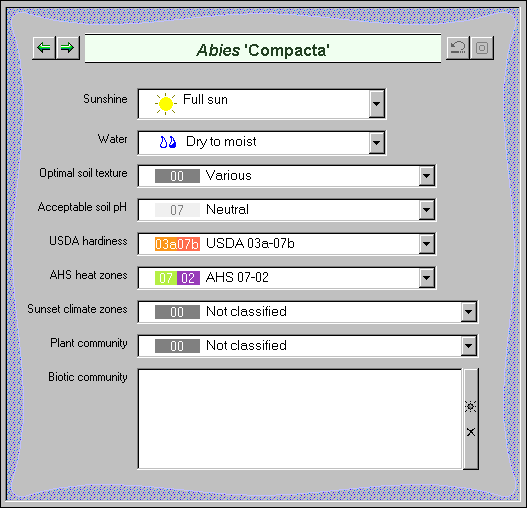
|
The Climate View is used by nurseries, gardeners, farmers, and
horticulturists to identify the optimal growing conditions for a plant. |

| Sunshine |
Optimal lighting requirements to prevent scorching and to promote
healthy growth. |
| Water |
Best moisture conditions for terrestrial plants. A good indicator
of a plant's tolerance to the extremes of drought and over saturation. |
| Optimal soil texture |
The best type of soil for providing a support base and for
retaining/releasing available water. |
| Acceptable soil pH |
An indicator of a plant's suitability to acidic conditions. |
| USDA hardiness |
The United States Department of Agriculture's hardiness zones in which
this plant is known to thrive. This range of zones indicates both the
lowest temperature acceptable for survival as well as the plant's
requirement for a cold dormant period. |
| AHS heat zones |
The American Horticultural Society's heat zones in which this plant is
known to survive. The lower value indicates a plant's minimum
requirement for summer heat. The upper value indicates a plant's maximum
tolerance for summer heat. |
| Sunset climate zones |
The Sunset Books' climate zones in which this plant does best.
This set of zones may be a discontinuous range, for example: "Zones 4-9,
14-24". |
| Plant community |
One or more of the 29 plant communities defined by Munz, which indicates
the native environment in which the species is naturally found growing. |
| Biotic community |
One or more of the plant communities defined by Brown, Reichenbacher,
and Franson which indicates the species' range of natural occurrence in the
environment. |
|
|